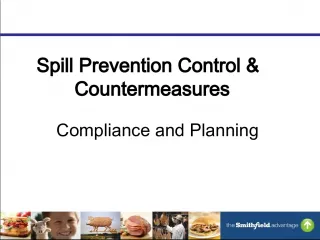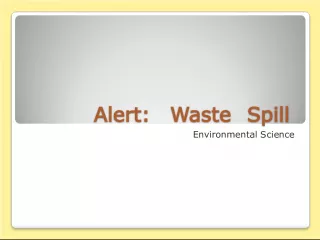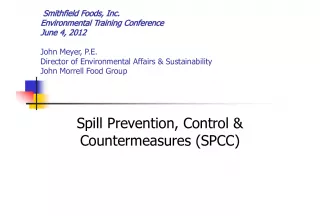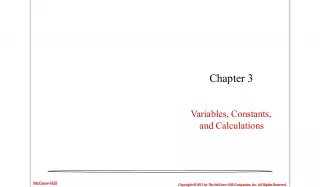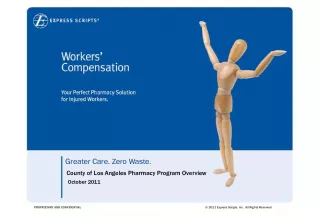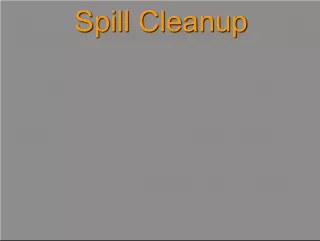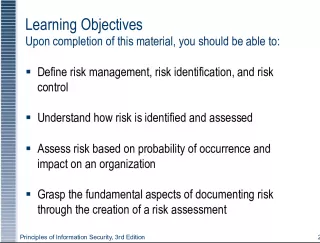Spill Containment Controls and Countermeasures (SPCC)


Compliance dates for all facilities under 40 CFR 112 should have maintained their existing SPCC plan on or before August 16, 2002. If not, they should have amended and implemented the plan by November 10, 2010, and plan for up to 6 months of production afterwards.
- Uploaded on | 3 Views
-
 malika
malika
About Spill Containment Controls and Countermeasures (SPCC)
PowerPoint presentation about 'Spill Containment Controls and Countermeasures (SPCC)'. This presentation describes the topic on Compliance dates for all facilities under 40 CFR 112 should have maintained their existing SPCC plan on or before August 16, 2002. If not, they should have amended and implemented the plan by November 10, 2010, and plan for up to 6 months of production afterwards.. The key topics included in this slideshow are . Download this presentation absolutely free.
Presentation Transcript
1. Spill Containment, Controls and Countermeasures 1
2. Spill Containment, Control and Countermeasures SPCC
3. SPCC • 40 CFR 112 • Compliance Dates for all Facilities – on or before August 16, 2002 • maintain its existing SPCC Plan • amend and implement the SPCC Plan no later than November 10, 2010 After that date, plan before/up to 6 months for production
4. What are the items under SPCC • Petroleum products • Animal fats • Oils – new and used
5. What is counted? • Underground storage – 42,000 gallons or more • Above ground storage -1,320 in containers larger than 55 gallons.
6. What is excluded? Not counted……… • Anything below 55 gallons • Mobile sources • pesticide application equipment and related mix containers. • any oil storage container that is permanently closed. Frequently overlooked • Hydraulic reservoirs on fixed equipment. • Used oil containers
7. Definition of Loading/Unloading Rack • EPA finalized a definition for loading/unloading rack which governs whether a facility is subject to§112.7(h) • Definition of “loading/ unloading rack” is: – based on set of characteristics generally associated with loading/unloading rack – based on both the description in the SPCC Guidance for Regional Inspectors and a definition suggested by industry representatives – a slightly modified version of the definition proposed in Oct 07
8. What is a loading Arm • • Loading/unloading arm is a key component of a loading/unloading rack. • • A loading/unloading arm typically – is a movable piping assembly that may include fixed piping or a combination of fixed and flexible piping – has at least one swivel joint (that is, at least two articulated parts that are connected in such a way that relative movement is feasible to transfer product via top or bottom loading/unloading to a tank truck or rail car).
9. Loading Arms 9 Certain loading/unloading arm configurations present at loading racks may include a loading/unloading arm that is a combination of flexible piping (hoses) and rigid piping without a swivel joint. – In this case, a swivel joint is not present on the loading arm because flexible piping is attached directly to the rigid piping of the loading arm and the flexible hose provides the movement needed to conduct loading or unloading operations in lieu of the
10. Current (1973) Regulatory Definition of “Navigable Waters The term “navigable waters” of the United States means “navigable waters” as defined in section 502(7) of the FWPCA, and includes: • (1) all navigable waters of the United States, as defined in judicial decisions prior to the passage of the 1972 Amendments of the Federal Water Pollution Control Act, (FWPCA) (Pub. L. 92-500) also known as the Clean Water Act (CWA), and tributaries of such waters as; • (2) interstate waters; • (3) intrastate lakes, rivers, and streams which are utilized by interstate travelers for recreational or other purposes; and • (4) intrastate lakes, rivers, and streams from which fish or shellfish are taken and sold in interstate commerce.
11. Self Certifying: who can • "Tier I" qualified facilities have an additional option to complete and implement a streamlined, self-certified SPCC Plan template (Appendix G to the rule).
12. Tier I Qualifications • 10,000 gallons or less in aggregate aboveground oil storage capacity; and • For the 3 years prior to Plan certification, or since becoming subject to the rule if it has operated for less than 3 years, the facility must not have had: – A single discharge of oil to navigable waters or adjoining shorelines exceeding 1,000 U.S. gallons, or – Two discharges of oil to navigable waters or adjoining shorelines each exceeding 42 U.S. gallons within any 12- month period; and • Maximum individual aboveground oil storage container capacity of 5,000 U.S. gallons.
13. Tier I and Tier II: the differences • All qualified facilities that are not Tier I are “Tier II qualified facilities.” • A Tier I owner/operator would be able to choose Tier I or Tier II status if qualifying criteria are met. • The requirements for Tier II qualified facilities remain the same as they were when these requirements were promulgated in December 2006. • Tier II qualified facilities are not able to use the Appendix G template because it does not include all of the SPCC requirements that may apply for these facilities.
14. Training is important • Train to the plan • Annually at least • Quarterly drills • Discuss drills both good and bad 14
15. • http://www.youtube.com/watch?v=rKmS8V fNNgQ 15
16. Questions Please 16 The End
